Approximately 90 percent of kidney and adrenal tumors are treated transperitoneally (within the abdominal space). Ketan Badani, MD, believes a significant percentage of these procedures could be done using a robot-assisted retroperitoneal approach.
“The transperitoneal approach is the one that is most commonly taught, which is why most surgeons feel comfortable using it to perform partial nephrectomy and adrenalectomy,” says Dr. Badani, Professor of Urology and Director of the Kidney Cancer Center at the Icahn School of Medicine at Mount Sinai. “But there are certain cases where it makes sense to access these tumors retroperitoneally because it offers a more minimally invasive approach that reduces the risk of complications for the patient.”

Ketan K. Badani, MD, FRCS (Hon.), Professor of Urology and Director of the Kidney Cancer Center at the Icahn School of Medicine at Mount Sinai
Dr. Badani typically prefers the retroperitoneal approach among patients who present with tumors on the posterior side of the kidney because it provides direct access and eliminates the need to move organs or dissect and flip the kidney using the transperitoneal approach. He also prefers the retroperitoneal approach among patients who present with considerable scarring from previous abdominal procedures as it eliminates the risks associated with extensive lysis of adhesions, specifically ileus and bowel injury.
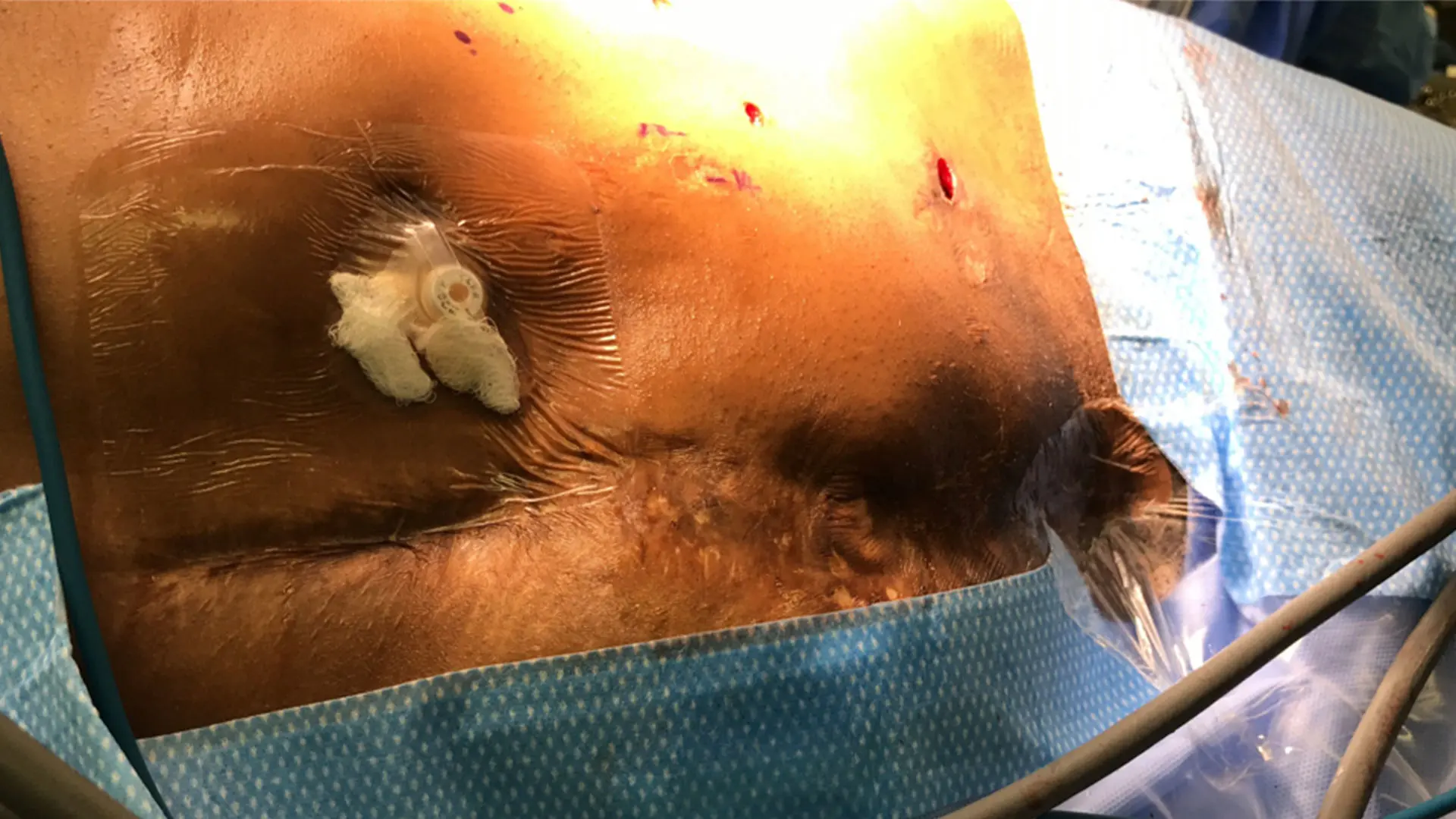
Example of extensive prior abdominal surgery where retroperitoneal approach will improve surgical outcome
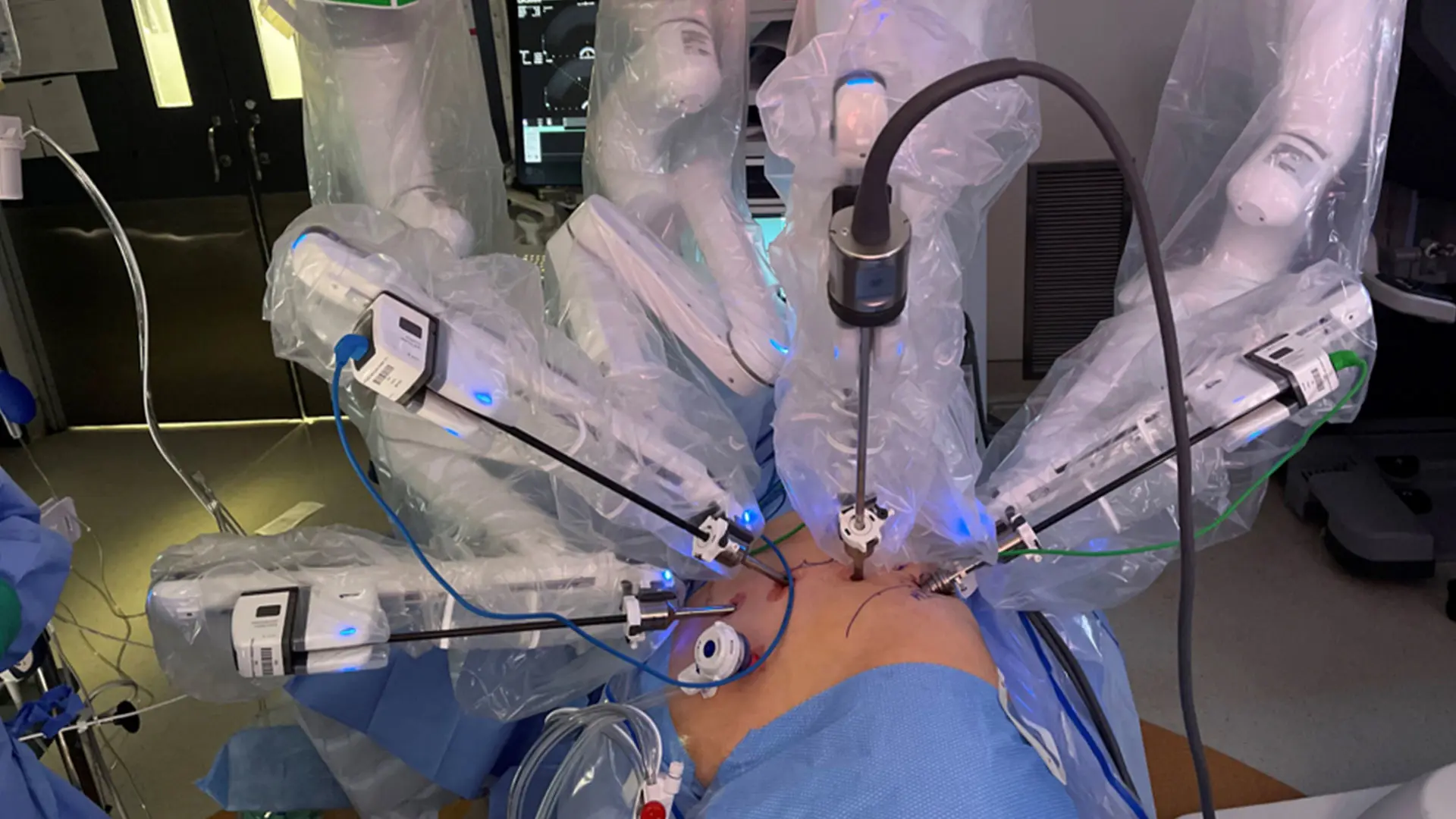
Photo of surgical robotic system in place
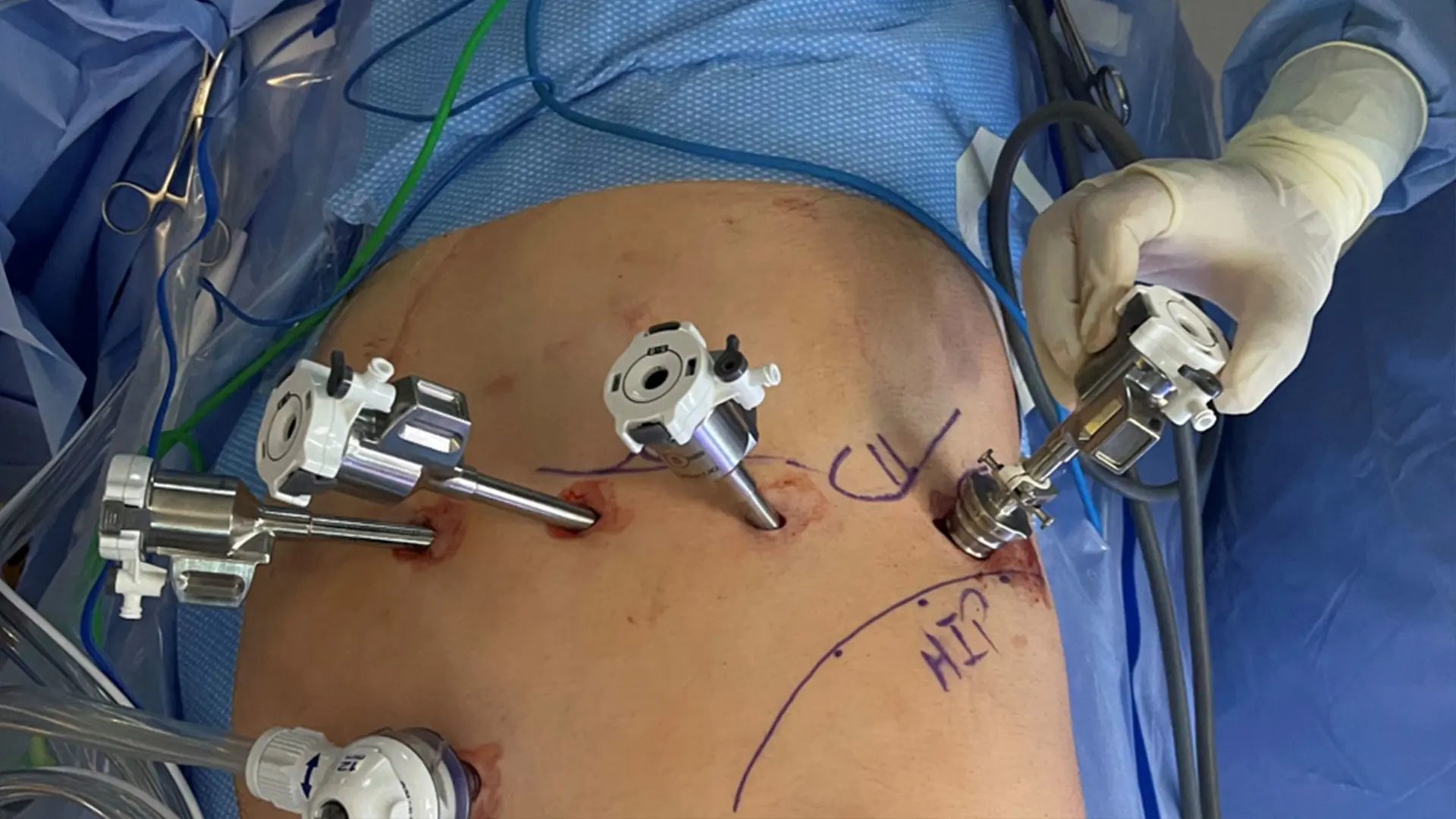
Robotic port placement for retroperitoneal kidney and adrenal surgery

Balloon dilator used to create the retroperitoneal space
“The retroperitoneal approach is a major asset in cases involving the adrenal gland among patients who have undergone prior abdominal surgery,” says Dr. Badani, who is also Vice Chair of Urology and Robotic Operations for the Mount Sinai Health System. “The retroperitoneum is a very small space that, historically, has been hard to access, even more so if you want to avoid scarring and adhesions. Through the retroperitoneal robotic approach, I am able to reach the gland directly and perform kidney or adrenal surgery in a safe way.”
Although Dr. Badani was among the first surgeons to adopt a robot-assisted retroperitoneal approach, he initially restricted its use to extreme cases involving significant scarring and adhesions. Initially, he says, the technology was not optimized for performing surgery in such a small space, resulting in the robotic arms clashing and restricted movement. But as the technology advanced and robotic platforms became slimmer and more streamlined, he significantly expanded his use of this approach.
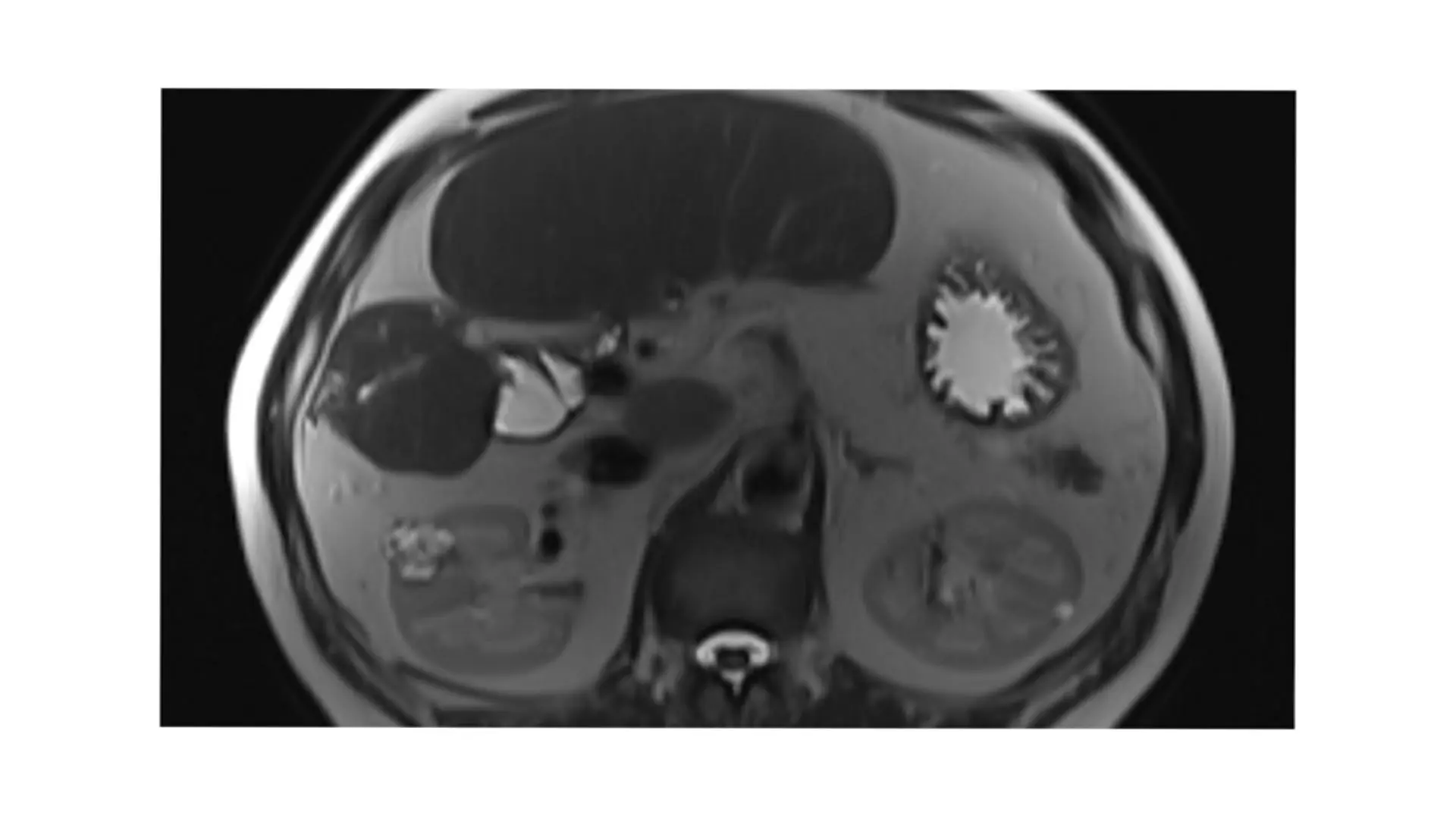
An anterior tumor on the kidney that is ideal for the retroperitoneal approach
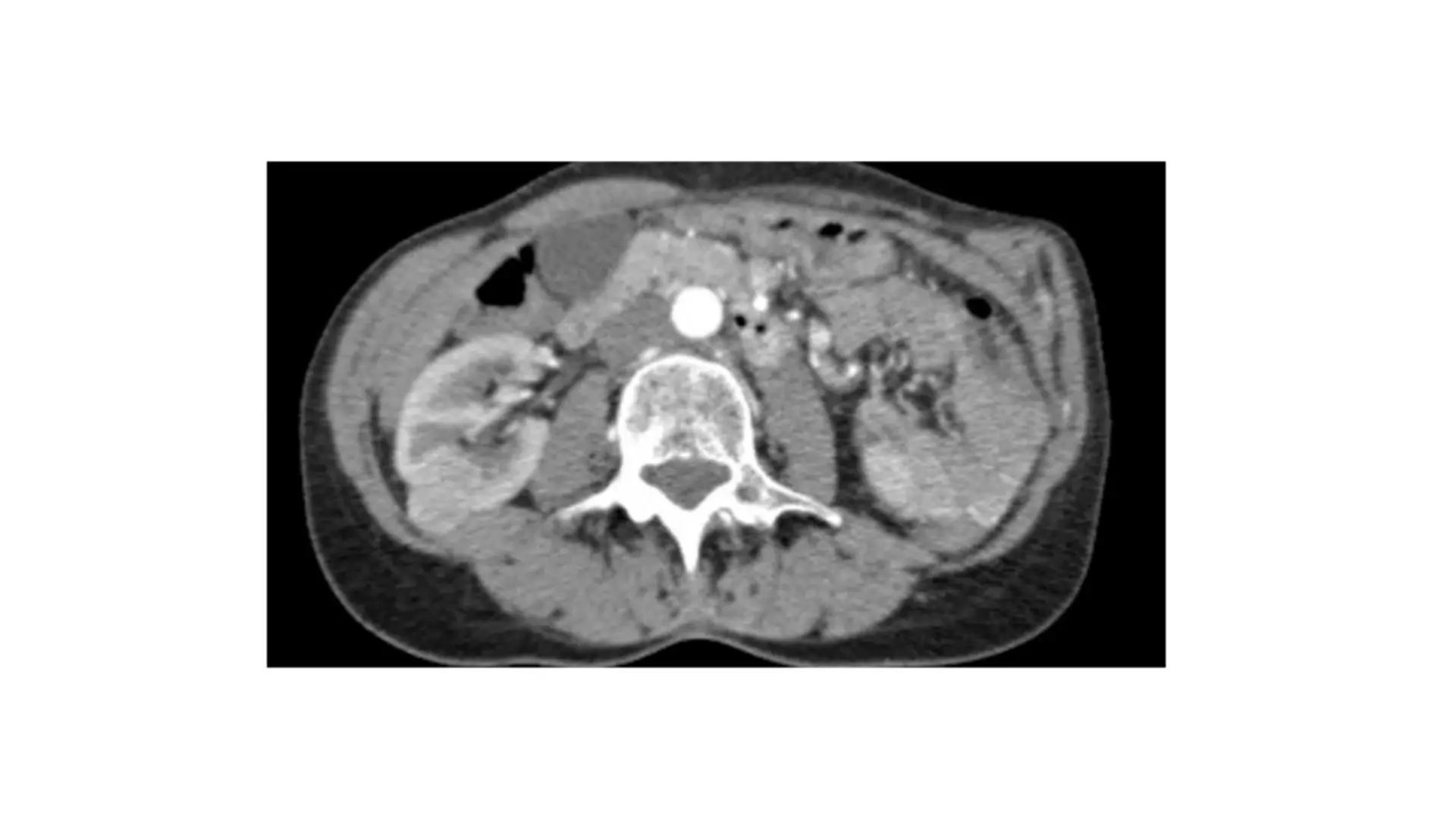
A posterior tumor that is ideal for the retroperitoneal approach
Over the last five years, Dr. Badani has reached the point where he performs more robot-assisted kidney surgery than any other surgeon nationwide. He estimates that approximately 30 percent of all kidney and adrenal surgeries he performs are done retroperitoneally and that volume has enabled him to refine his approach, resulting in a reproducible, safe, and effective procedure that he is teaching to colleagues.
“Given our volume and the results we are seeing, especially among complex cases involving prior abdominal surgeries and posterior tumors, we are seeing considerable interest among urologists in learning this procedure,” he says. “As more surgeons begin using this approach, I think we will see the share of procedures performed retroperitoneally increase considerably.”
Articles published by Dr. Badani suggest that the retroperitoneal approach is highly comparable to transperitoneal in several key metrics, such as safety, achieving negative margins, and minimizing complications. But he has noted that the retroperitoneal approach is slightly faster, and more patients are typically discharged the same day of the procedure, possibly because they are not experiencing the abdominal and bowel irritation typically associated with transperitoneal surgery.
Guided by the goal to be as minimally invasive as possible, Dr. Badani has adopted a single-port robotic platform for retroperitoneal partial nephrectomy and adrenalectomy procedures. He is leading a multi-institutional study to explore whether it has any advantages over using a multiport platform.
“Whether the single-port approach has clinically meaningful differences for patients is yet to be determined,” he says. “But the preliminary data from more than 100 single-port procedures, many of which were retroperitoneal, are showing some promise not just in terms of being less invasive but also the fact that more patients are being discharged the same day without any added risks.”